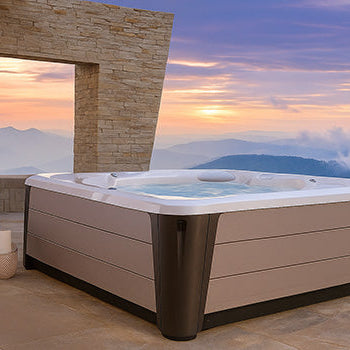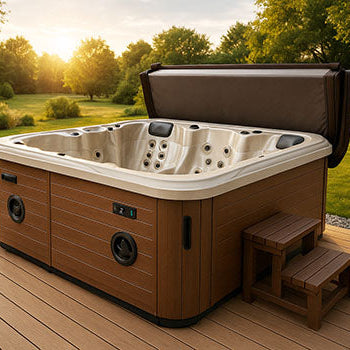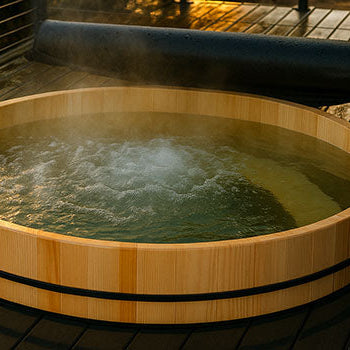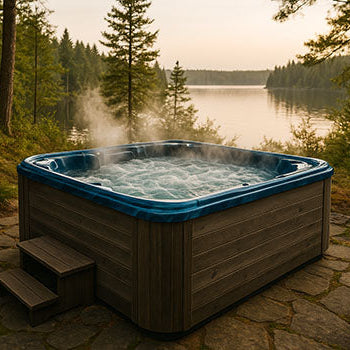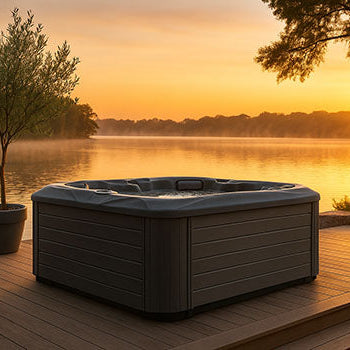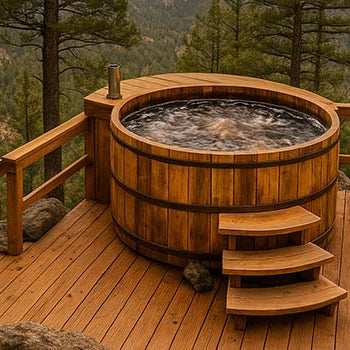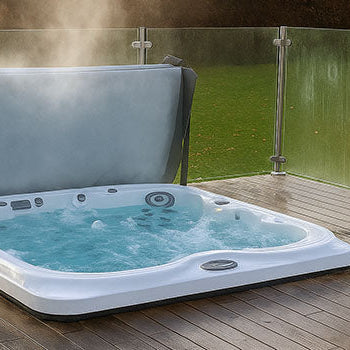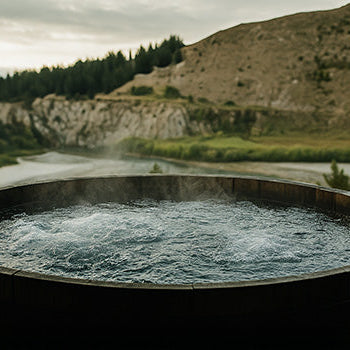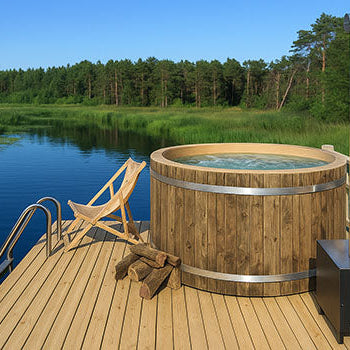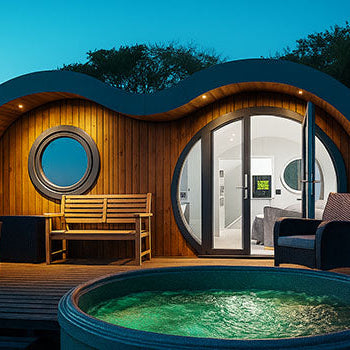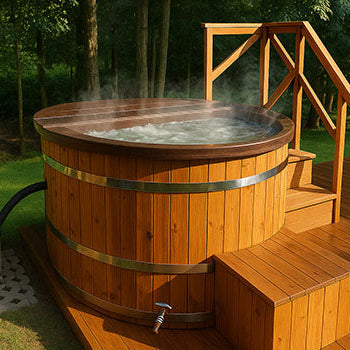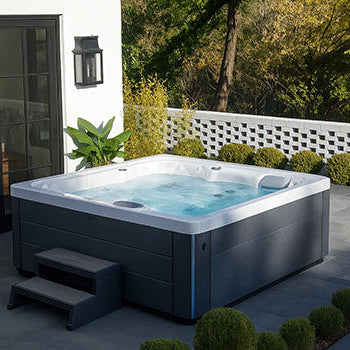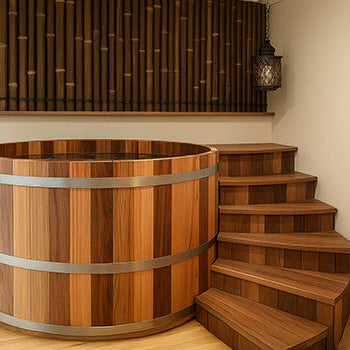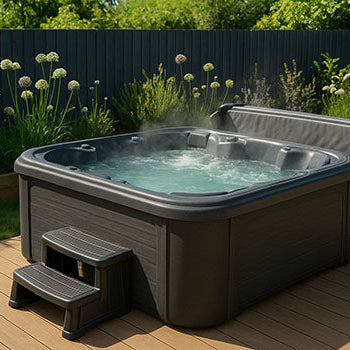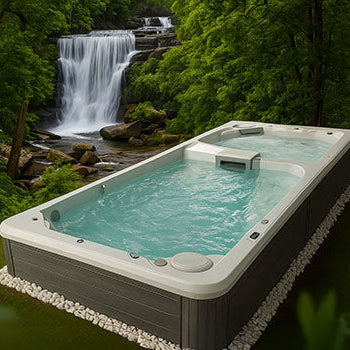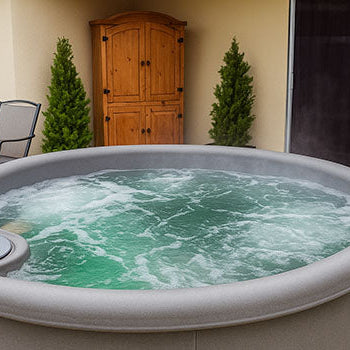Aching knees after a long day? Soaking in a hot tub might help with inflammation, yep! That warm water does more than just feel nice. From sleek Acrylic Hot Tubs to rustic Wooden Hot Tubs, or even durable Rotomoulded models, each style brings comfort with a twist of therapy.
The short answer? Yes, hot tubs can help ease inflammation symptoms, especially with chronic pain. Curious how it all works? Let’s dive in.

What is Inflammation? Acute vs. Chronic
Inflammation is your body's built-in emergency crew. When something’s wrong, like a twisted ankle or an infection, it rushes in to protect and repair.
But sometimes that crew overstays its welcome.
That’s where the difference between short-term (acute) and long-term (chronic) inflammation comes in. Understanding both can help you make smarter choices about using heat therapy, like hot tubs.
Acute Inflammation: The Body's Response to Injury/Infection
This type is fast and fiery. Think swollen ankles, bruised shins, or the sore spot after a bee sting. It usually fades once the body has handled the issue.
Acute inflammation is temporary, but in that window, adding heat too soon can make things worse. That's why timing matters.
Chronic Inflammation: Long-Term Conditions (e.g., Arthritis)
Chronic inflammation is quieter, but much more stubborn. It shows up in long-term conditions like arthritis, fibromyalgia, and autoimmune disorders.
Unlike the quick burst of acute inflammation, this kind lingers in the background, often for years.
That’s where hot tubs can shine, providing daily relief and helping people manage symptoms naturally.
How Heat Therapy (Thermotherapy) Affects the Body
Step into a hot tub and something amazing happens. Your body doesn’t just feel good, it starts to respond.
Here’s how this simple act of soaking in warm water supports healing.
Vasodilation: Increasing Blood Flow
Warmth from the water causes your blood vessels to open wider. That rush of increased circulation brings more oxygen and nutrients to your tissues, kind of like fuelling up your muscles and joints for repair.
More blood flow means better healing and reduced stiffness. It’s like sending a delivery van of goodness straight to the sore spots.
Muscle Relaxation and Reduced Stiffness
You know that feeling when your shoulders finally drop after a stressful day? That’s heat at work.
As your muscles warm up, they let go of tension. Stiff joints feel looser, tight muscles start to soften, and your body begins to move more easily.
Pain Gate Theory: How Heat Can Reduce Pain Perception
Ever heard of the “pain gate”? It's a brain trick.
When your skin senses heat, it sends signals to the brain that can override pain signals. This is why a hot bath feels like magic when you're aching.
Hot tubs help ‘close the gate’ on pain, even if just for a little while.

Hot Tubs and Chronic Inflammation: Potential Benefits
For anyone dealing with daily aches, a hot tub can feel like a tiny miracle in the garden. Especially for chronic issues that don’t go away with just rest or painkillers.
Let’s look at the real-life benefits for people living with long-term inflammation.
Easing Arthritis Pain and Joint Stiffness
Ask anyone with arthritis what mornings feel like, and they’ll likely say “slow and sore.”
Hot tubs provide weightless support for your joints, easing pressure and gently warming stiff areas. This combo helps improve mobility and reduce pain, especially first thing in the morning or before bed.
Relief from Fibromyalgia Symptoms
Fibromyalgia comes with a mix of pain, fatigue, and tension. Soaking in warm water helps break the cycle by relaxing your muscles and calming your nervous system.
Some users even report better sleep and brighter moods after regular sessions.
Soothing Chronic Muscle Soreness
You don’t have to be an athlete to suffer from constant muscle pain. Desk jobs, stress, and old injuries all contribute.
Hot tubs help by loosening tight muscles, improving flexibility, and encouraging blood flow where you need it most.
Improved Circulation and Nutrient Delivery
Your blood does more than you think; it carries nutrients, clears waste, and supports healing. But poor circulation means these processes slow down.
Warm water boosts circulation naturally, helping your body work more efficiently in its fight against inflammation.
Hot Tubs and Acute Inflammation: When Caution is Needed
Here’s where things get tricky. While hot tubs are great for chronic conditions, they’re not your best friend right after an injury.
Heat can make things worse if used too soon.
Why Heat is Generally Not Advised for Fresh Injuries (Swelling)
Imagine twisting your ankle and jumping into a hot tub. That warmth will feel good, but it can also increase swelling.
Fresh injuries are already inflamed, and adding heat just sends more blood to the area, which your body doesn’t need in the early stages.
The RICE Protocol (Rest, Ice, Compression, Elevation) for Acute Issues
For new injuries, stick to RICE: Rest, Ice, Compression, Elevation. It’s not glamorous, but it works.
Once the swelling’s gone down (usually a few days), then you can consider easing into warm soaks.
Consulting a Doctor or Physiotherapist for Injury Management
When in doubt, always ask a professional.
A physiotherapist can tell you if your injury is ready for heat or still needs rest and ice. Everybody heals differently, and expert advice makes all the difference.
Mechanism: Symptom Relief vs. Curing Inflammation
We’ve covered a lot, but here’s something important to remember.
Hot tubs are helpful, but they’re not magic. Let’s get clear on what they can and can’t do.
Hot Tubs Primarily Offer Temporary Symptomatic Relief
Yes, soaking in a hot tub eases pain, loosens joints, and helps you relax.
But the effects are temporary, you’ll need ongoing sessions to maintain that comfort. It’s about managing inflammation, not eliminating it.
They Do Not Address the Root Cause of Chronic Inflammation
Conditions like rheumatoid arthritis, chronic fatigue, or autoimmune diseases aren’t “fixed” by heat alone.
Hot tubs help with the symptoms, but they don’t tackle the deeper causes. That’s where lifestyle, medication, and medical support come in.

Conclusion: Hot Tubs Can Help Manage Chronic Inflammation Symptoms, But Use Caution with Acute Issues
So, do hot tubs reduce inflammation? Yes, but mostly the symptoms, not the source.
For chronic issues, they’re a fantastic addition to your wellness routine, offering relief, better sleep, and improved mobility. Just remember, for fresh injuries, skip the soak and go for RICE instead.
No matter your style, Acrylic, Wooden, or Rotomoulded Hot Tubs, it’s how you use them that counts.
Use them right, and your body will thank you.
